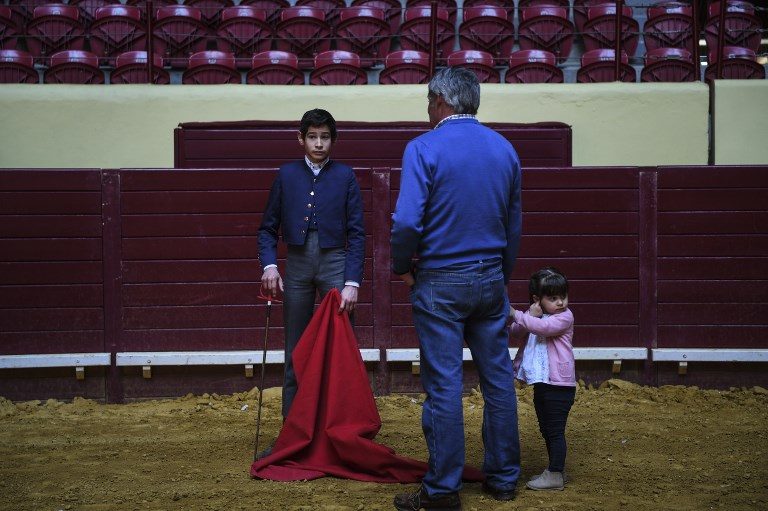SUMMARY
This is AI generated summarization, which may have errors. For context, always refer to the full article.

LISBON, Portugal – Portugal’s bullfighting tradition is on its knees, having seen attendance fall nearly by half in the past decade. Now the stalwarts of the centuries-old practice are reaching out to children, hoping to turn them into future fans, to the dismay of animal rights advocates.
Blood was conspicuously absent at a recent “Bullfighting Day” at the neo-Arabic Campo Pequeno arena in Lisbon, Portugal’s premier bullfighting venue.
It was a family affair, with children enjoying arena-shaped bouncy castles and demonstrations by apprentices of their bullfighting skills, stopping short of sticking the animals with lances called banderillas.
The event drew criticism from animal rights group Basta, which denounced the “exposure of children to the violence of bullfighting” as contravening a 2014 opinion by the UN Committee on the Rights of the Child.
Pedro Antunes, 34, a bank employee who brought his five-year-old son Tiago to the event, saw things differently.
“I don’t go to a bullfight very often but I wanted my son to see what it was like. As the program didn’t include anything violent, I thought this would be a good occasion to do so,” Antunes told AFP.
For Paulo Pessoa de Carvalho, president of Portugal’s bullfighting federation ProToiro, the event was intended “to restore the tie between the bull and Portuguese culture – and increase our audience.”
He added that ProToiro wanted to “create careers”.
Last year, nearly 380,000 people attended 173 bullfights across Portugal, according to the culture ministry’s General Inspection of Cultural Activities (IGAC).
Basta claims that organizers inflate the figures to hide the true scale of the decline in interest, and that the drop since 2009 is no doubt more than 42%.
Campo Pequeno, a stunning neo-Moorish building dating from 1892, underwent a six-year overhaul to become a multi-event venue, reopening in 2006 to host famous bands as well as bullfights, with an underground shopping center, cinema and restaurants added to the mix.
On “Bullfighting Day”, however, spectators occupied hardly a third of the 7,000 seats.
Children suited up in traditional matador costumes took a stab at fighting dummy bull heads mounted on two wheels before returning to the stands.
Then real bulls were let into the arena and the crowd was treated to a demonstration of all aspects of Portuguese bullfighting – except the bloodletting with banderillas.
Killing the bull has been illegal in Portugal for some 200 years. The “final act” in the modern spectacle involves a group of “forcados” who together immobilize the bull with their bare hands, killing it only symbolically.
‘Politically correct’
Late last year the culture minister of Portugal’s Socialist government, Graca Fonseca, voiced opposition to bullfighting, saying it was “not a question of taste but of civilization”.
The remark made the aficionados of ProToiro see red, and they demanded her resignation. “Controversies are normal, but I think they come from a misunderstanding of bullfighting,” president Pessoa de Carvalho said.
“We live in a politically correct era and we are giving in to the radicalism of a minority.”
Little Tiago claimed that the spectacle didn’t scare him, and his face betrayed a mix of fascination and tension as he watched the interaction of man and beast in the bullring.
But the boy clenched his eyes shut when the bull charged at the “forcados”. – Rappler.com
Add a comment
How does this make you feel?
There are no comments yet. Add your comment to start the conversation.